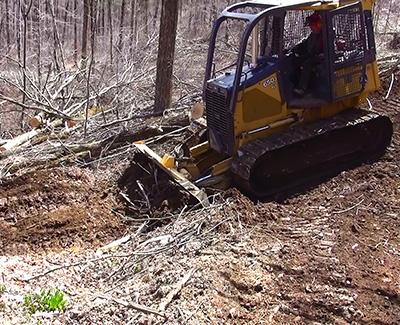Determining the Implementation Costs of Best Management Practices on Family Forests in the Northern Forest

Forestry best management practices to protect water quality (BMPs) effectively reduce erosion and sediment transport during and immediately following forest harvest operations. BMPs help maintain healthy aquatic habitats, clean drinking water, and reusable forest roads and logging skid trails. Loggers typically incur the costs of implementing BMPs in the form of equipment and labor costs. Additional costs may be incurred where BMPs extend harvest operations and reduce system productivity.
NSRC researchers conducted a study to better understand how BMPs impact logging operations throughout the northeastern U.S. First, they collected production and activity data from loggers. Researchers analyzed the data in combination with logging machine (equipment) rate calculations to determine amounts of time spent on BMPs and associated costs for eight harvest operations in New York, Vermont, Pennsylvania, and Massachusetts. Second, researchers conducted a survey of 112 logging business owners and crew supervisors to assess how BMP requirements affected logging productivity. Survey respondents estimated the number of days required to complete a hypothetical harvest with and without BMPs and to indicate minimum contract rates they were willing to accept for each.
Overall, costs to implement BMPs ranged from $0/acre to $62/acre and depended on the specific BMP requirements, machine costs, level of mechanization, and crew size. The case studies showed a reduction in harvest productivity due to BMPs from 0 to 9%, while the high level of BMP requirements described in the survey produced 20% loss in productivity, on average. The results of this study will inform loggers, extension specialists, cost-share programs, and, importantly, practicing foresters who represent landowners and mills.
